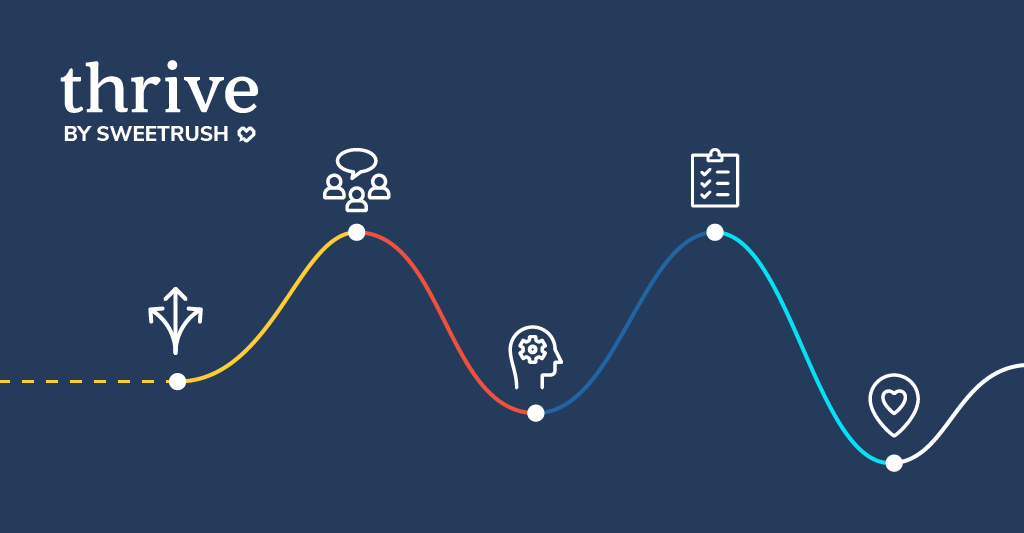Imagine a workplace culture where excitement fills the air, where everything is done to enhance the customer experience, where innovation thrives and teams easily adapt to unforeseen circumstances, where your senior team works toward a shared vision of success, and where people genuinely care for one another, feel recognized, and receive support within the organization.
Cultures like these are not created overnight. They aren’t formed by policy, procedure, and measuring key performance indicators (KPIs). High-performance business cultures have values alignment, mission alignment, and low levels of fear. These are cultures where employees can bring their beliefs and values to work and where there’s a shared belief, throughout the organization, that they have a high-performing culture. So how do you create a high-performance culture?
Our intention for this series of articles is to introduce the concept of cultural transformation in larger organizations, those with more than 1,000 employees. We’ve seen organizations transform their cultures and ignite success time and time again. This article series includes three brief culture change case studies, an overview of the concepts and key learnings about transforming culture, and exercises to help you get started.
Our hope is that this paper will give you the confidence and the tools to begin one of the most important and catalyzing journeys in your organization’s history.
Why Transformation?
While culture change involves engineering a process and managing the moving parts, transformation takes place on the inside. Cultural transformation involves human beings and all the feelings, beliefs, and values that motivate them.
It’s about working with people’s motivations to create something bigger and better than you could have imagined alone. It takes time and needs to be cultivated, like a plant or any living thing. While change is a process from “this” to “that,” transformation unleashes the best of what can be. Transformation frees human potential and accesses our collective wisdom.

Culture Is A Journey, Not A Destination
Throughout this series, we refer to the culture change journey. Leaders on a transformational path need to respond to market conditions as well as to the needs of their internal teams. You will create visions and then reshape them. Culture is not a place you arrive at but a way of being that you will develop and evolve over time.
![]()
 In 2017, Ashley Munday, Former Director of Thrive by SweetRush, and Tor Eneroth, Director of Cultural Transformation at Barrett Values Centre, wrote an eBook as a resource and workbook for leaders to get started on the culture journey in a meaningful and tactical way. To accommodate as many leaders as possible, we have converted the content into a series of articles that can be read piece by piece and will be publishing them on a weekly basis. We invite you to consume the material at your own pace and welcome your feedback and questions along the way. Thrive by SweetRush is now known as Transforming Leaders and Culture (TLC) by SweetRush. Please reach out to begin transforming your organization today!
In 2017, Ashley Munday, Former Director of Thrive by SweetRush, and Tor Eneroth, Director of Cultural Transformation at Barrett Values Centre, wrote an eBook as a resource and workbook for leaders to get started on the culture journey in a meaningful and tactical way. To accommodate as many leaders as possible, we have converted the content into a series of articles that can be read piece by piece and will be publishing them on a weekly basis. We invite you to consume the material at your own pace and welcome your feedback and questions along the way. Thrive by SweetRush is now known as Transforming Leaders and Culture (TLC) by SweetRush. Please reach out to begin transforming your organization today!
![]()
If you’re reading this series, we know you are a leader who understands and cares about the way your organization’s culture supports its people and its purpose—for that, we thank you! Check out the other articles in this series:
- Culture Change in Organizations Begins Within
- Organizational Culture Transformation—A Journey, Not a Destination
- Culture Change Case Study: Volvo IT
- Changing Corporate Culture Case Study: Old Mutual Group
- Cultural Change In Organizations Example: Unilever Brazil
- Key Learnings in Culture Transformation
- Growing Your Desired Culture: Leadership Commitment
- Growing Your Desired Culture: Roles for Supporting Culture
- Growing Your Desired Culture: Defining and Growing Your Culture
- Growing Your Desired Culture: Structural Alignment
- Growing Your Desired Culture: Follow-Up and Learning




